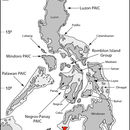en
names in breadcrumbs


Previous taxonomic assessments of species in this genus recognized six groups of species that shared similar morphologies (see Brown and Alcala, 1980). Subsequent analyses of morphology and phylogenetic studies have not supported the monophyly of these species groups, and large taxonomic revisions are needed in this diverse group of ground skinks to sort out the true species diversity and appropriate generic assignments of its members. This species has traditionally been considered a member of Group 2 species in the genus Sphenomorphus. Group 2 species were diagnosed on the basis of being relatively small species with short limbs and low lamellae and body-scale counts (Brown and Alcala, 1980).
In recent study of Philippine forest skinks, Linkem et al. (2011) used molecular data to test the monophyly of previously hypothesized species groups within the genus Sphenomorphus. Results of the study indicated widespread taxonomic instability, and as a result, broad taxonomic changes were made to the genus, resurrecting available names as well as describing new genera. Sphenomorphus biparietalis is now recognized to be a member of the genus Tytthoscincus.
Sphenomorphus biparietalis can be distinguished from congeners by the following combination of characters (1) small body size (SVL 31.3–36.0 mm); (2) paravertebral scales 61–68; (3) midbody scales 30–34; (4) number of supraoculars contacting frontal 2; (5) Toe IV lamellae 9–11; (6) prefrontal scales in contact or separated; (7) frontoparietal scales not fused; (8) venter ivory.
Sphenomorphus biparietalis is known from Basilan Island and the islands of the Sulu Archipelago in the extreme southern Philippines.
This species is known from the Sulu Archipelago and Basilan Island in the extreme southern Philippines
SVL 31.3–36.0 mm
Lapac Island, Sulu Archipelago, Philippines; type lost in the destruction of the Philippine Bureau of Science during World War II; MCZ 26384-85 (paratypes)